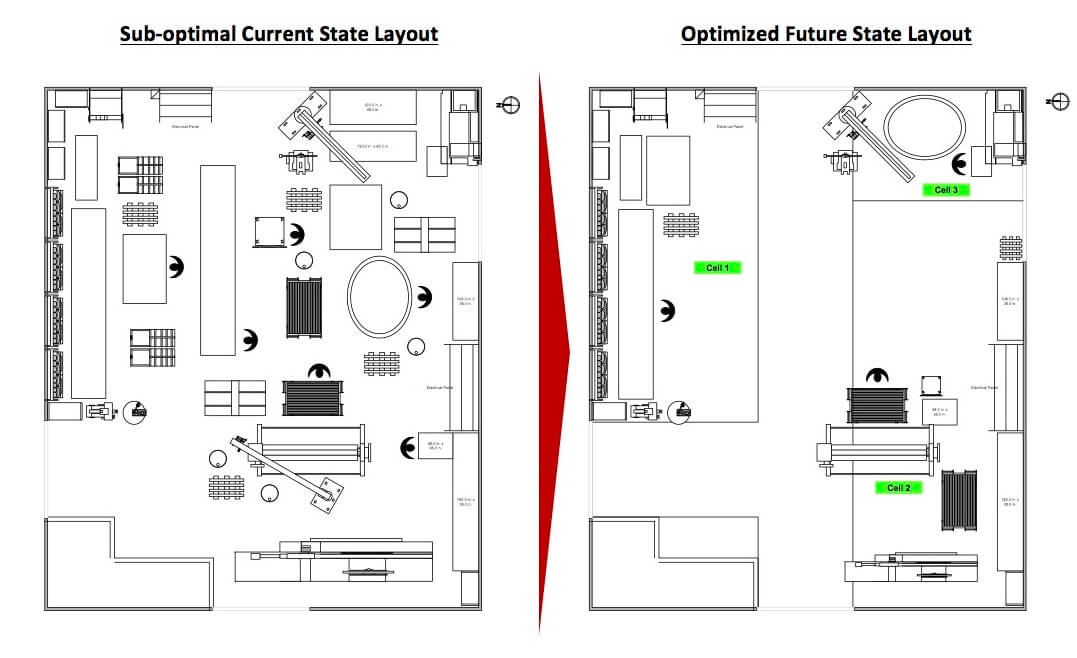In manufacturing, space is expensive and quality is important. Manex receives many requests from clients to optimize a current or future space. The aim of improving a layout is to minimize expansion expenses by creating space and flow within the given constraints. Optimal layout process involves allocating space and arranging equipment and other physical assets in such a way that the operating costs are minimized and process efficiencies are maximized. At the micro level (within a department) layout changes can and should be made as and when a need arises. However, at a macro level (company-wide), management should analyze the layout at least once a year to ensure the changes at the micro level are positively impacting the overall flow, and make necessary adjustments as needed. Layout optimization, on most occasions, doesn’t require significant investment. Typically, for a sub-optimal layout, 50 to 80 percent improvement can be easily realized.
Production efficiency levels depend on optimal location of various machines, production facilities and employee’s amenities. An optimally laid out plant can ensure smooth and rapid movement of material, from the raw material stage to the finished product stage. Optimal layout facilitates the production of the right quantity and quality of output at the lowest possible cost. Pull system, the preferred method of movement of goods and services, is also heavily reliant on the existence of an efficient layout.
Characteristics of a sub-optimal facility layout:
- Inventory lying all over the place
- Pallets have to be displaced to get to other pallets
- Potential safety violations
- Excessive movement of inventory and people within the facility
- Personnel have to walk an additional distance to accomplish their daily tasks
- Low production and low overall equipment efficiency (OEE)
- Delays, bottlenecks, inadequate storage locations
- Material handling constraints
- Process is tied to one or two important machines or areas within the facility,
resulting in sub-optimal flow - Desire to add space as a fast solution
Manex’s approach to create an efficient layout:
- Study existing processes affecting the layout
- Study process, information and people flow
- Draw current layout taking into account the above two points
- Study existing constraints that need to be avoided
- Review new constrains that need to be built into the new layout
- Take into account any updates related to processes and physical assets
- Consider plan for any future additions and enhancements
- Design new layout by considering above constraints and updates
- Draw the new layout

Typical results from a Manex layout optimization approach include:
- Significant savings obtained by eliminating remote warehouse and distribution centers
- 35% reduction in material handling and walking activities
- 50% to 80% availability of retained space, which can be used to add more capacity
- 10% to 30% reduction in lead time (typically production lead times)
- Drop in inventory levels (raw materials, work in process and finished goods inventory) due to better flow and higher visibility
- Drop in safety-related incidents and increase in worker productivity
- Improved morale and decreased absenteeism
Contact Manex at 925.807.5100 or email bizdev@manexconsulting.com to discuss maximizing space efficiencies and work flows through layout optimization.


